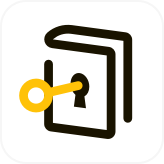Last updated on 2025/08/02
The C Programming Language Summary
Brian W. Kernighan
A Comprehensive Guide to Mastering C Programming.
Last updated on 2025/08/02
The C Programming Language Summary
Brian W. Kernighan
A Comprehensive Guide to Mastering C Programming.
Description

How many pages in The C Programming Language?
272 pages
What is the release date for The C Programming Language?
"The C Programming Language," authored by Brian W. Kernighan and Dennis M. Ritchie, is not merely a textbook; it is a seminal work that presents the essential concepts of the C programming language with unparalleled clarity and precision. Designed for both novices and seasoned programmers, this book seamlessly intertwines theoretical foundations with practical examples, empowering readers to master a language that has profoundly influenced software development and computing. By exploring the syntax, data structures, and programming techniques unique to C, readers gain not only proficiency in coding but also an appreciation for the art of problem-solving and algorithmic thinking. Delve into this classic guide to unlock the full potential of C and witness how it lays the groundwork for understanding modern programming languages.
Author Brian W. Kernighan
Brian W. Kernighan is a renowned computer scientist and a pioneer in the field of programming languages, best known for co-authoring "The C Programming Language" alongside Dennis Ritchie, which laid the foundational principles of the C programming language and has influenced countless software development practices. Born in 1942 in Toronto, Canada, Kernighan earned his Ph.D. from Princeton University, where he later became a professor, contributing to both academic and practical advancements in computer science. His work extends beyond C, encompassing various projects in software development and several influential books on programming and Unix, making him a prominent figure in the growth of modern computing.
The C Programming Language Summary |Free PDF Download
The C Programming Language
Chapter 1 | - A Tutorial Introduction
Chapter 1 of "The C Programming Language" by Brian W. Kernighan serves as a concise introduction to the C programming language, designed to furnish readers with essential programming skills while avoiding overwhelming detail. Initially, the chapter emphasizes that the best way to learn C is through practical application—writing programs rather than merely reading theory. As a warm-up exercise, the reader is encouraged to create a foundational program that prints "hello, world," a customary first step in programming. This involves setting up the program structure, compiling it, and executing it, with examples provided for compiling on Unix systems. The structure of a C program is outlined, highlighting that it comprises functions and variables. Functions contain the operational statements, while variables store values. The introduction of `main`, which signifies the starting point for execution, establishes that every C program must include at least one function. The compiler directive `#include` is introduced, which facilitates the inclusion of standard libraries, most notably for input/output functions such as `printf`. This function is explored in depth, including the formatting of output strings, escape sequences like `\n`, and the implications of not including necessary characters for proper output. Transitioning into numerical operations, the chapter covers the importance of variables and arithmetic expressions. A temperature conversion program transforms Fahrenheit to Celsius, showcasing variable declaration, assignment, loops (specifically, the `while` loop), and formatted output. The importance of initializing variable values before usage is emphasized, and new concepts such as comments in code are introduced, which enhance code clarity without affecting execution. Following this, arithmetic operations are explored. The chapter introduces `printf` formatting options for better output presentation. A program can utilize features of `float` for more accurate calculations, demonstrating the significance of selecting appropriate data types and the impact of integer division on outcomes. The chapter also presents the `for` statement as a more concise method for writing loops, highlighting its advantages in clarity and compactness. To improve code maintainability, the notion of symbolic constants is introduced using `#define`, which allows easier adjustments when multiple instances of a number appear in the code. Character input and output are examined next, showcasing how standard functions like `getchar` and `putchar` can be utilized for basic text processing. Programs that count characters, lines, and words illustrate how looping constructs can implement input processing tasks efficiently. Finally, the chapter introduces the topic of functions in greater detail, including function definition, return values, and parameter handling. The distinction between call by value and call by reference is highlighted, showcasing how C functions treat arguments and variables. The need for developer-defined functions is emphasized, enhancing the modularity of programs. Throughout, the narrative encourages readers to engage with the examples actively, enhancing understanding through practical application. Exercises at the end of each section of the chapter prompt further exploration and application of discussed concepts. 1. The chapter emphasizes the importance of practical application, starting with a simple "hello, world" program to familiarize readers with the syntax and compilation process in C. 2. Key components of C programs are introduced, including functions (with `main` being essential), variable declarations, and library inclusions through `#include`. 3. Fundamental operations and basic data types (integer and float) are explained through example programs, highlighting the significance of initializing variables and utilizing loops for iterative tasks. 4. Formatting in output functions and the use of character arrays for text input and output are explored, demonstrating how they enable interaction with user input and presentation of results. 5. The chapter concludes with an overview of writing user-defined functions, delineating how parameters work and endorsing a modular programming approach for better code organization. This chapter sets the groundwork for upcoming discussions in subsequent chapters, enhancing the reader's programming literacy and familiarity with the C language. It establishes a clear pathway for learning that balances practical coding experience with foundational theoretical knowledge.
Chapter 2 | - Types, Operators and Expressions
In programming, variables and constants serve as the foundational elements manipulated within a program. Declarations specify the intended usage of these variables, detailing their types and optionally setting initial values, while operators dictate the actions performed on the variables. Expressions merge variables and constants to create new values, with each variable's type governing the allowable operations and possible outcomes, providing a structured framework for the program. The ANSI standard introduced several updates to basic types and expressions in C. This includes the introduction of signed and unsigned versions of every integer type, enhanced support for floating-point operations through long double types for extended precision, and the ability to concatenate string constants. In addition, enumerations were formalized, and objects can be declared with the const specifier to maintain immutability. Automatic type coercion rules have also evolved, accommodating a broader set of types. 1. In terms of naming conventions, variable names must begin with a letter or an underscore (though starting with an underscore is discouraged). Names can vary in length, with the first 31 characters being particularly significant for internal use. Upper and lower case letters are treated distinctly, and reserved keywords cannot be utilized as variable names. It's prudent to select meaningful names, correlating them with their purpose in the program. 2. C has a limited number of basic data types, including char, int, float, and double, with each serving distinct roles in data handling. The qualifiers short and long extend the capacity of integers. The integral types can be specified as either signed or unsigned, with the latter strictly representing non-negative values. Additionally, floating-point types can vary in precision, influenced by the compiler and the underlying hardware. 3. The representation of constants in C is varied. Integer constants default to int types unless indicated otherwise (as with long or unsigned constants). Floating-point constants can be either single precision or double precision, and they can be specified in decimal, octal, or hexadecimal form. Character constants serve as integer representations of single characters, often utilizing escape sequences for characters that require special notation. 4. All variables must be declared before being used, with the declaration typically including the type and an optional initializer. Automatic variables are initialized upon entry into their scope, while external and static variables default to zero. The const qualifier ensures that a variable's value remains unchanged throughout its lifetime. 5. C employs a variety of arithmetic operators, including addition, subtraction, multiplication, division, and modulus, to perform calculations on numerical data. Integer division results in truncation, and the sign of results can be machine-dependent. 6. C incorporates relational and logical operators to evaluate expressions and determine truth values. These operators have distinct precedences and can be employed in conditional constructs. Logical expressions are particularly efficient in avoiding unnecessary evaluations through short-circuiting. 7. Automatic type conversions occur in expressions where operands differ in type, aimed at eliminating potential information loss. For instance, when a character is used in arithmetic, it is seamlessly converted into its integer representation. 8. Increment and decrement operators allow for intuitive adjustments to variables, enhancing code efficiency. These operators can be prefixed or suffixed, affecting when the value of the variable is utilized in expressions. 9. Bitwise operations enable manipulation of individual bits within integral types, allowing for advanced control over data representation. These include shifting bits left or right and performing logical operations at the bit level, which is crucial in systems programming. 10. The use of assignment expressions and conditional operators provides concise alternatives to traditional constructs, aiding in the development of clearer and more maintainable code. 11. The order of operator evaluation and precedence dictates how expressions are interpreted and executed, crucial for achieving the desired logical outcomes within expressions. By understanding these principles, programmers can effectively leverage C's types, operators, and expressions to develop robust and efficient applications. The chapter’s coverage of these foundational concepts equips developers with the tools necessary to write clear and effective code in C.
Key Point: The Importance of Naming Conventions
Critical Interpretation: Just as in programming, where the names of variables must be meaningful and thoughtfully chosen, so too in life should you strive to communicate your intentions clearly and effectively. Imagine every interaction as a variable; how you name and which labels you assign convey your purpose and position in the world. Choosing words and actions that reflect your true self can shape how others perceive you and influence the connections you build. By embracing the idea that clarity and intent matter—whether in crafting code or relationships—you empower yourself to navigate your life more purposefully, ensuring that your contributions are not only understood but appreciated. Your choices in expression can become a powerful tool, propelling you toward a life that resonates with authenticity and clarity.
Chapter 3 | - Control Flow
Chapter 3 of "The C Programming Language" focuses on control flow, which dictates the order of computation in C programming. Understanding control flow is crucial for writing effective programs. 1. In C, statements are formed when expressions such as assignments or function calls are followed by a semicolon. The semicolon acts as a statement terminator rather than a separator. Braces `{}` encapsulate blocks of code, allowing multiple statements to be treated as a single unit, which enhances organization and readability. It’s important to note that no semicolon follows the closing brace of a block. 2. The if-else statement is highlighted as essential for making decisions based on the truth value of an expression. If the expression evaluates to a non-zero value, the subsequent statement is executed; otherwise, if an else statement follows, the corresponding alternative statement is executed. Coding shortcuts allow expressions to be simply evaluated in their truth form without explicitly checking for non-zero. Care must be taken during nested if-else structures, as ambiguity can arise regarding to which if an else statement belongs. Using braces can help eliminate confusion. 3. The else-if construct allows for multi-way decision-making, where multiple conditions can be checked in sequence. This is particularly useful, as exemplified by a binary search function, which efficiently locates a value in a sorted array by repeatedly dividing the search interval in half. 4. The switch statement offers another means of multi-way decision-making, where an expression is evaluated and compared against predefined case values. The match triggers execution of the associated statements. The use of the break statement is crucial to prevent unintentional fall-through to subsequent case statements, which can lead to subtle bugs. 5. Loops are fundamental in repeated operations. The while and for loops provide mechanisms for iteration based on the evaluation of conditions. The for loop is especially favored for situations with a known number of iterations or when loop control variables need to be centralized. Different styles—while for undefined iterations versus for for defined iterations—highlight the programmer's intent, facilitating more readable and maintainable code. 6. The do-while loop is unique as it guarantees the body’s execution at least once, a feature useful in certain contexts. This loop type tests its condition after each execution, setting it apart from the others. 7. Statements like break and continue provide control during looping structures. The break statement offers an immediate exit from loops or switch cases, while continue skips to the next iteration of a loop. Both are tools that can enhance control flow but should be used judiciously to maintain clarity in code. 8. The goto statement and labels enable unstructured jumps within a function; however, their use is discouraged as it can lead to confusing and difficult-to-maintain code. While there are specific scenarios where a goto might simplify error handling or exit from deep nesting, it's generally advisable to avoid it in favor of clearer constructs. Control flow in C is paramount for designing efficient programs, understanding condition evaluation and the types of loops allows developers to implement logic that responds dynamically to varying conditions, making C a powerful language for system-level programming and algorithm development. Each element discussed supports the disciplined structure required for effective code, emphasizing clarity and maintainability.
Key Point: Embracing the power of decision-making structures like if-else can transform life choices.
Critical Interpretation: As you navigate through life, much like programming, you constantly face choices that dictate your path. Understanding control flow in C programming inspires you to approach decisions thoughtfully, considering the outcomes of your options. Just as an if-else statement evaluates conditions, you can assess your circumstances and choose the best course of action. This empowers you to make informed decisions rather than reactive ones, enhancing both clarity and intention in your life journey. By embracing this mindset, you cultivate resilience and adaptability, enabling you to respond dynamically to life's challenges with purpose and confidence.
Chapter 4 | - Functions and Program Structure
Functions play a crucial role in C programming by breaking down complex computing tasks into smaller, manageable components. This modularity not only facilitates collaboration among programmers but also simplifies the codebase, making it easier to understand and modify. By organizing code into functions, specific operational details can be encapsulated, shielding parts of the program from unnecessary complexity. Consequently, functions are efficient and promote clarity, which is a fundamental design choice in C where multiple small functions are favored over a few large ones. Programs in C can be structured across one or more source files, enabling the possibility of separate compilation and linking with previously compiled functions from libraries. However, the specifics of this process vary depending on the system. 1. In terms of function declarations and definitions, the ANSI C standard introduced significant changes, allowing type declarations of function arguments at the time of function declaration. This not only aligns the syntax of declarations and definitions but enhances error detection capabilities in compilers, enabling automatic type coercion when arguments are correctly declared. The standard also clarifies name scope rules, stipulating a single definition for each external object and allowing for broader initialization of automatic arrays and structures. 2. The design of functions can be illustrated through a practical example of a pattern-matching program, akin to the UNIX grep utility. The program is structured in three primary components: reading lines of input, checking for the presence of a specified pattern within those lines, and printing the matching lines. Opting for separate functions for each task streamlines the code, permitting easier maintenance and potentially reusable components. Notably, the `strindex` function is crafted to return the starting index of a pattern within a string, or -1 if the pattern is absent. This design choice allows for flexibility; future enhancements to string searching require modifications only to the pertinent function while keeping the rest of the code intact. 3. Function declarations adhere to a consistent format that defines the return type, function name, and possible argument declarations. Although minimal functions can exist, such as a placeholder that performs no operation, properly designed functions enhance program modularity. Communication between functions is conducted through arguments, return values, and external variables, allowing functions to interoperate regardless of the order of definition. 4. When applying functions, the return statement is paramount for sending values back to the calling function. While it’s possible for functions not to return a value, returning different types from distinct points within the same function can lead to errors. Thus, maintaining consistency is key. 5. In instances where multiple source files are utilized, the compilation process may involve referencing these files. For example, commands can be issued within UNIX systems to compile several source files simultaneously, promoting efficient code management. 6. Expanding upon return types, C functions can also return non-integer values such as doubles. The `atof` function demonstrates this, converting a string representation of a number into its floating-point equivalent. Proper declaration and type consistency are essential to avoid mismatches and ensure logical program operations. 7. The significance of external variables is emphasized as a means of data sharing across functions. These variables, defined outside functions, maintain their values across multiple invocations, offering an alternative to passing long argument lists. This mechanic provides a practical solution when functions need to share data without direct function invocation. 8. Functions can be organized in a modular fashion across different files, with well-defined scopes for variables to ensure clarity and manageability. The external linkage of variables enables their use across multiple functions, yet necessitates careful organization to avoid redundancy and errors. 9. The use of static variables enables encapsulation of data within specific files or functions, restricting access as necessary while retaining values across function calls. 10. The C preprocessor enhances programming by allowing file inclusions and macro expansions, which simplify code management and enable conditional compilations. File inclusion lets developers streamline common definitions and declarations, while macros provide shorthand for repetitive code patterns, albeit with caution regarding side effects and evaluation order. Ultimately, mastering function design and utilization in C programming enhances efficiency, readability, and maintainability, making it a cornerstone of effective software development. By leveraging these principles, programmers can create modular, robust applications that can adapt to evolving requirements with minimal overhead.
Key Point: Modularity through Functions
Critical Interpretation: Just as in C programming, where breaking down complex tasks into functions enhances code clarity and collaboration, you can apply this principle to your daily life. By approaching your goals in a modular fashion—dividing them into smaller, manageable tasks—you remove the overwhelm that often comes with larger projects. Whether tackling a work assignment, personal development, or even household chores, having well-defined steps allows you to focus on one thing at a time, fostering a sense of accomplishment as you complete each part. This approach not only simplifies your challenges but also provides a clearer path to your overall success, showing that effective organization and clarity can lead to both personal and professional growth.
Chapter 5 | - Pointers and Arrays
Chapter 5 of "The C Programming Language" by Brian W. Kernighan delves into the critical concepts of pointers and arrays, fundamental components of the C programming language. The text presents pointers as variables that store memory addresses and highlights their significance in creating more efficient and compact code, while addressing their potential to cause confusion if misused. 1. The chapter begins by defining pointers and their relationship with memory organization. Memory is depicted as an array of consecutively numbered cells, where pointers can reference individual cells or groups. The operators `&` (address-of) and `*` (dereference) are introduced to manipulate pointers effectively, with clear examples demonstrating how to declare and use pointers with various data types, including integers and characters. 2. C's ability to pass arguments by value is explained in the context of function calls. It emphasizes the use of pointers in function parameters to enable modifications of actual variables outside the calling function. The example of the `swap` function illustrates how to interchange values of two variables by passing their addresses, reinforcing the utility of pointers in enabling such operations. 3. The close relationship between pointers and arrays is explored next, showcasing that array subscripting can be replicated using pointer arithmetic, which often results in enhanced performance. The text clarifies that an array name is synonymous with the address of its first element, thus establishing that pointer arithmetic and array indexing yield equivalent outcomes. 4. Address arithmetic allows for intuitive manipulation of pointer values, with examples including the creation of a rudimentary memory allocator that utilizes pointers to manage dynamic memory allocation. 5. The chapter continues by discussing string handling in C, emphasizing that string constants are actually arrays of characters terminated by a null character (`'\0'`). The examples illustrate how to define and manipulate strings with pointers, leading to the definition of functions for tasks such as copying and comparing strings. 6. The concept of pointer arrays and pointers to pointers is introduced, indicating that pointers themselves can be stored in arrays. An example of sorting text lines using an array of pointers highlights efficient management of variable-length strings. 7. Multi-dimensional arrays are introduced briefly, with attention given to their nature as an array of arrays and the necessary syntax for passing them into functions. The array's initialization is discussed alongside providing functions for day conversions, laying groundwork for understanding complex data manipulation. 8. The text explains how to write additional functions that utilize pointer arrays, using an internal static array to return month names efficiently. 9. Important improvements and examples are given to illustrate command-line arguments, enabling programs to process input dynamically and flexibly. An example is the `echo` program, which outputs command-line arguments. 10. Function pointers gain attention in demonstrating their utility in sorting algorithms, enabling dynamic selection of comparison criteria during sorting. 11. Finally, the complexity of C syntax, especially around declarations involving pointers, is addressed. A focus is placed on the need for careful reading of pointers and functions to avoid confusion in complex declarations, capped by exercises to further challenge the reader in applying these concepts. By examining pointers and arrays thoroughly, Chapter 5 establishes a robust foundation for understanding memory management and data manipulation in C, emphasizing the elegance and potential pitfalls of these powerful tools. The exercises and examples provided reinforce the learning experience by encouraging practice and application of concepts in numerous contexts, from basic string operations to more complex memory management techniques.
Key Point: Embracing the power of pointers can transform how you approach problem-solving.
Critical Interpretation: Just like pointers in C allow you to directly navigate and manipulate memory, you can direct your life by harnessing your focus and intentions toward your goals. By understanding that each decision can lead to numerous outcomes, you are empowered to take control, adapting and changing your path with precision. This realization encourages you to utilize the resources available to you—much like using pointers to harness the efficient use of memory—reinforcing the idea that you have the ability to change your trajectory and optimize your life's journey. Just as misusing pointers can lead to undesirable results, being aware of your choices ensures you navigate through life successfully, avoiding pitfalls and working toward your aspirations with clarity.
Chapter 6 | - Structures
In Chapter 6 of "The C Programming Language" by Brian W. Kernighan, the concept of structures in C programming is explored extensively. Structures serve as a means to group various types of data into a single unit, enhancing organization and data management, especially in large programs. These constructs allow for the aggregation of related variables that can be handled collectively instead of individually. 1. Definitions and Examples: Structures, sometimes referred to as records in other programming languages, are defined using the `struct` keyword followed by a body encapsulated in braces. A fundamental example is a `struct point`, representing a point in graphics with coordinates `x` and `y`: ```c struct point { int x; int y; }; ``` In this case, `x` and `y` are members of the structure. The concept of structure assignment was refined with the ANSI standard, enabling direct copying, assigning to, and passing structures to functions. 2. Structure Initialization and Usage: Structures are typically initialized with a list of values as follows: ```c struct point pt = {320, 200}; ``` Accessing the members of a structure is accomplished with the dot operator (`.`), allowing for expressions to retrieve specific values, such as `pt.x`. Structures can also be nested, meaning that a structure can contain another structure, which is particularly useful for modeling complex data types like rectangles. 3. Structures with Functions: Structures interact seamlessly with functions, where they can be passed as parameters or returned. The practice of passing structures by value (copying) can be inefficient for large structures, leading to the alternative of passing pointers to structures. A pointer structure enables lightweight handling of large sets of data. For example: ```c struct point *pp; pp = &pt; printf("Point: (%d, %d)", pp->x, pp->y); // Using arrow operator for pointer access ``` 4. Arrays of Structures: The chapter emphasizes the advantage of using arrays of structures for managing related data, particularly when dealing with collections. For example, maintaining an array of keywords, where each entry contains a word and its count, improves organization over separate arrays. 5. Self-Referential Structures: Self-referential structures, where a structure contains a pointer to its own type, enable the construction of complex data structures such as linked lists or binary trees. This flexibility facilitates dynamic memory management and efficient processing of hierarchical data. 6. Using Pointers with Structures: Pointers are fundamental in creating dynamic data structures. The chapter illustrates how pointers can simplify operations on structures, enabling efficient access and modification while conserving memory usage. 7. Typedef: The `typedef` functionality allows programmers to create new type names for existing types, enhancing code clarity and maintainability. For instance, creating a `typedef` for a structure related to a tree node can simplify declarations and improve readability: ```c typedef struct tnode { char *word; int count; struct tnode *left; struct tnode *right; } Treenode; ``` 8. Unions: Unions are introduced as a method to store different data types in the same memory space. This technique can be particularly useful when managing various states or conditions without allocating extra space for each type: ```c union u_tag { int ival; float fval; char *sval; } u; ``` 9. Bit-fields: When dealing with flags or small integer values, bit-fields enable the efficient packing of data into a single integer variable. This feature is invaluable in low-level programming where space is critically constrained, providing a methodology to work with individual bits directly. Overall, the chapter underscores the versatility and power of structures, pointers, and related data management techniques in C programming. By leveraging these constructs, programmers can create complex applications that efficiently manage and manipulate data. The necessity for careful memory management is also highlighted, particularly with regards to self-referential structures and pointers, ensuring robust and optimized program performance. Each example and explanation builds towards promoting good programming practices in C, contributing to clear and maintainable code within extensive applications.
Key Point: Embrace the Power of Structures
Critical Interpretation: Just as structures in C group diverse data into cohesive units, you can find strength in the way you organize your life. Think about how you can cluster your goals, responsibilities, and relationships into distinct yet connected 'structures' in your day-to-day activities. When you define the elements that matter most to you—be it family, career, or personal growth—you're not just managing your time better; you're crafting a holistic view of your life that allows for balanced growth and productivity. Consider applying this concept: by categorizing different aspects of your existence and nurturing them collectively, you'll see how they interrelate, much like variables within a structure, leading to a more harmonious and fulfilling life.
Chapter 7 | - Input and Output
In the chapter on input and output from "The C Programming Language" by Brian W. Kernighan, a comprehensive overview of the C standard library’s handling of I/O is provided. This chapter emphasizes how critical I/O operations are to C programming, discussing various functions and techniques that facilitate interactions between a C program and its environment.
1. Standard Library Overview: The C programming language’s structure permits a rich standard library that includes functions for input and output, string handling, storage management, and mathematical calculations. The ANSI standard ensures these library functions are uniformly available across different systems. Consequently, programs using the standard library remain portable and require no alterations when moved between systems.
2. Text Streams and Basic Input/Output: Text streams are sequences of lines concluded with newline characters, abstracted seamlessly by the library. Functions like `getchar`, which reads single characters, and `putchar`, which outputs them, illustrate the foundations of input and output in C. They operate based on the standard input (typically the keyboard) and standard output (usually the display screen). C supports redirection of input and output streams, enabling flexibility in file handling.
3. Formatted Output with `printf`: The `printf` function allows for formatted output, translating internal values into a character stream under specified formats. It accepts a format string that consists of ordinary characters and conversion specifications. These specifications dictate how the accompanying variables should be presented, including aspects like field width, precision, and data types (e.g., integers, floating-point numbers, strings).
4. Variable-Length Arguments: Beyond dealing with static argument lists, C supports functions that can accept a varying number of arguments, exemplified by a minimal implementation of `printf` called `minprintf`. Using macros from `
Chapter 8 | - The UNIX System Interface
Chapter 8 of "The C Programming Language" by Brian W. Kernighan focuses on the UNIX System Interface, particularly how to use system calls within C programs for efficient input/output handling, file system operations, and memory management. Here's a detailed summary of the chapter: 1. Introduction to System Calls: The UNIX operating system provides services through system calls that can be accessed directly from user programs written in C. This chapter emphasizes the importance of understanding UNIX system calls, as they provide capabilities beyond the standard library functions. 2. File Descriptors and Stream Handling: In UNIX, all input and output is treated as file operations, allowing a uniform interface for interacting with various devices (e.g., keyboard, screen). When a file is opened, the system provides a file descriptor, a non-negative integer that uniquely identifies an open file. The standard input, output, and error streams are associated with file descriptors 0, 1, and 2, respectively. 3. Low-Level Input/Output - Read and Write: The chapter introduces the essential system calls for reading and writing data, specifically the `read` and `write` functions. These functions operate using file descriptors and allow for more granular control over data transfer operations compared to higher-level functions in the standard library. The effective use of buffer sizes during these operations can markedly improve data transfer efficiency. 4. File Management: The chapter explains the `open`, `creat`, `close`, and `unlink` system calls for managing files: - `open` allows files to be opened in various modes (read, write, etc.) and returns a file descriptor. - `creat` creates a new file or truncates an existing one to zero length. - `close` releases the file descriptor and any associated resources, while `unlink` deletes a file from the filesystem. 5. Random Access - Lseek: The `lseek` function enables random access to files by allowing the program to change the current file offset. This is useful for reading or writing data at specific positions within a file. 6. Working with Structures: The chapter includes an implementation of standard functions like `fopen` and `getc` to show how higher-level I/O functions can be built using lower-level system calls. This illustrates how understanding the underlying mechanisms helps improve programming practices. 7. Directory Manipulation: The chapter briefly touches upon reading directories and using system calls like `opendir`, `readdir`, and `closedir` to manage directory entries. This provides a foundation for exploring file system interactions. 8. Memory Allocation: Lastly, the chapter discusses dynamic memory allocation through system calls. The allocation routines (`malloc`, `free`, etc.) manage memory dynamically at runtime, supporting more flexible programming patterns. In summary, Chapter 8 equips the reader with practical insights into system-level programming in C using the UNIX interface. It reinforces the significance of understanding file management, I/O operations, and memory allocation through system calls, enabling programmers to create efficient and powerful applications in a UNIX environment.










